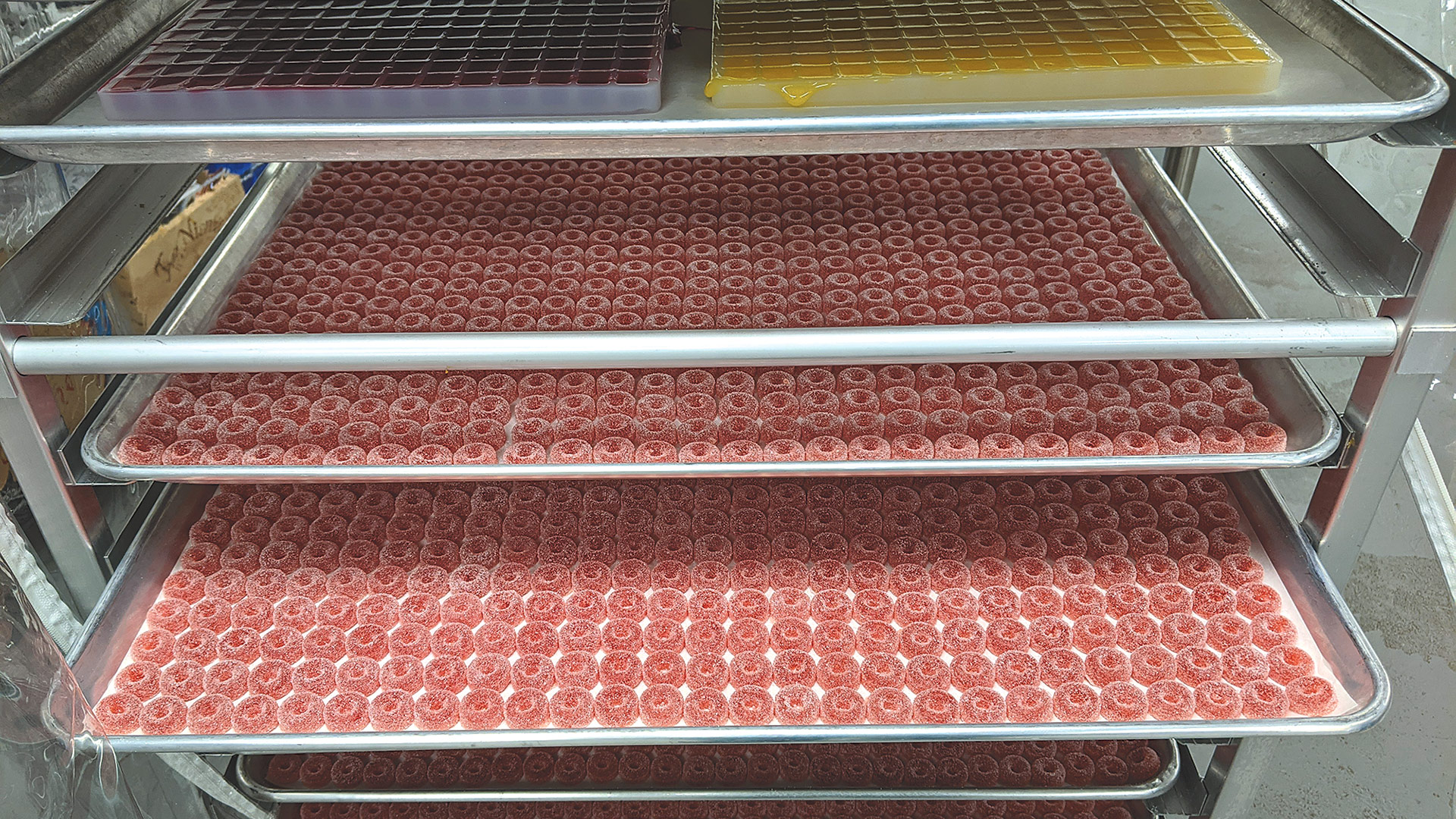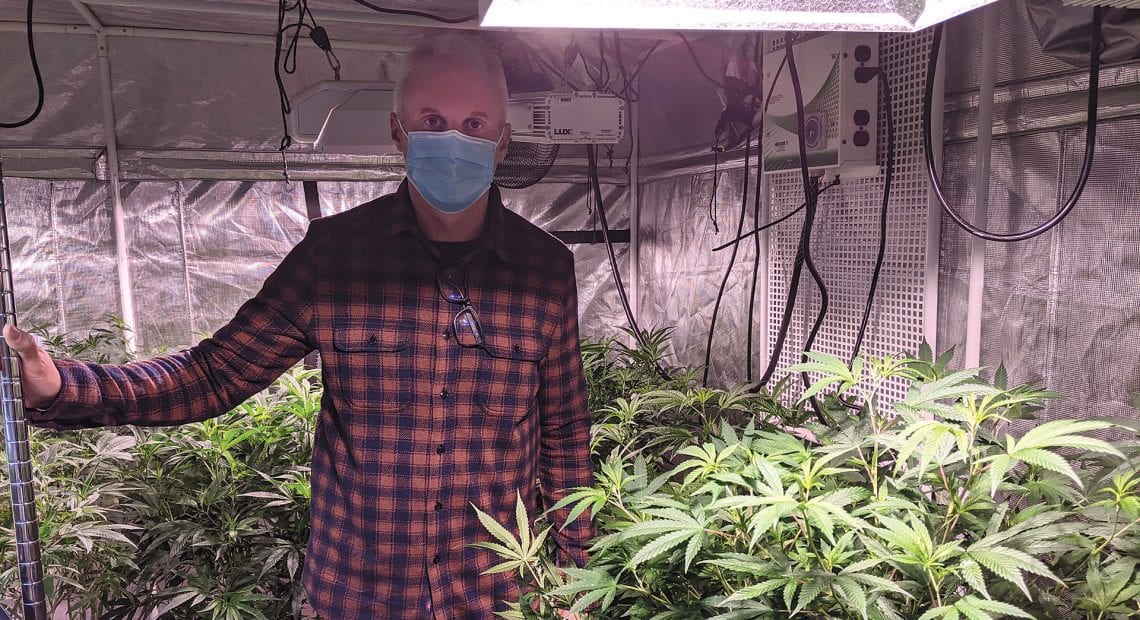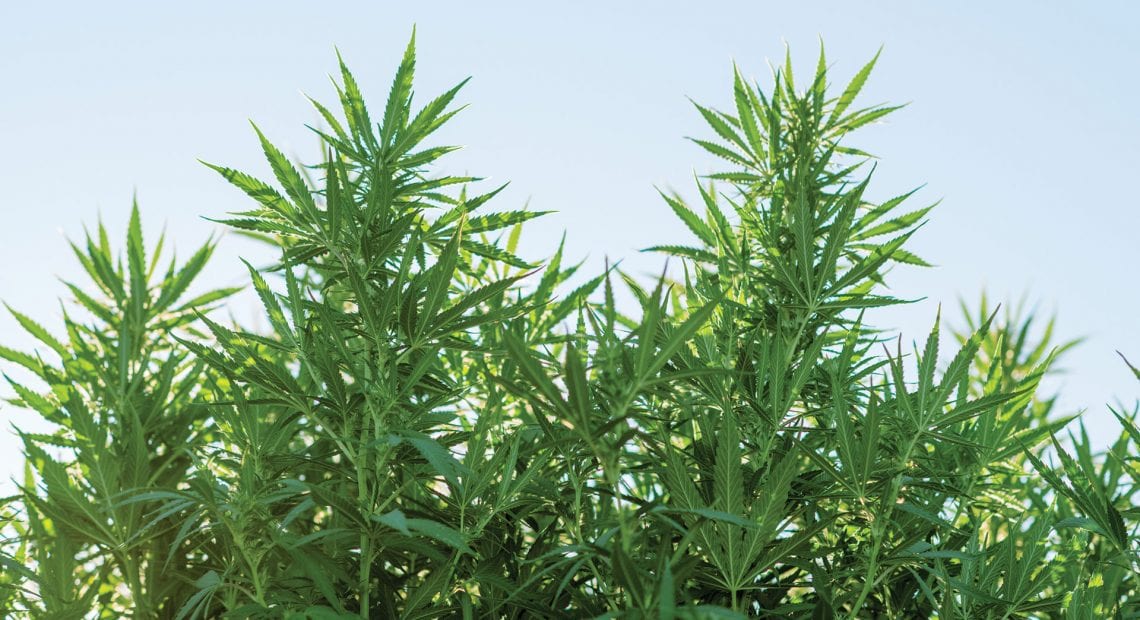Natural Resources

Tim Van Epps with some of the ‘mother plants’ growing indoors at Heritage CBD’s Northampton facility.
Tim Van Epps volunteers with an organization called Fairways for Freedom, which helps combat-injured vets assimilate back into society through holistic initiatives and golf, teaching them the game and sponsoring trips to great courses around the world.
That’s where Van Epps, president of the Sandri Companies, first saw the benefits of cannabidoil, or CBD, a chemical compound made from the hemp part of the cannabis plant.
“I saw veterans who were taking 30 different pills a day, and a lot of these veterans are just using CBD now, and that’s it,” he told BusinessWest. “I saw 25 guys who were doctor-prescribed drug addicts, and now they’re on CBD, and their lives have changed dramatically. I saw what this could do. I saw what it did for one of my older brother’s sons, and for folks with stage-4 cancer. I’ve watched with my own two eyes what it’s done for a lot of people who had a lot of problems.”
He’s done much more than observe, however, launching a company called Heritage CBD almost three years ago with Sarah McLaughlin, a nutritionist and registered sports dietitian who had built a whole-foods company called Sun Valley Bars, sold it to Nature’s Bounty, and was looking for a new challenge in the natural-products world.
“We took the idea to start a hemp/CBD company in the carriage house on my property,” Van Epps said, and soon after moved to a 17,000-square-foot property on nearby Industrial Drive in Northampton, where the company now works with well over a dozen farms that grow hemp, which is processed into a mulch-like substance called biomass, then processed into the line of oils, lotions, tinctures, gummies, and other products Heritage sells today.
“We wanted to do everything, soup to nuts — or seed to sale,” he explained, but emphasized the company’s relationship with local farmers as a critical component to his vision.

From left, Heritage CBD founders Tim Van Epps and Sarah McLaughlin and President Jake Goodyear.
“Many have been hurt financially over the past 10 years, and for many, the next generation doesn’t want to go into the business, so farms out here are struggling,” he said. “We saw hemp as a value-added cash crop we could introduce to the farming community. This was all about jobs, first and foremost — creating jobs in Western Massachusetts.”
Michael Lupario’s vision was multi-faceted as well. With a degree in environmental science from UMass Amherst, he’s long been passionate about soil sciences and promoting cleaner, more sustainable ways to farm.
Meanwhile, his interest in plant-based medicine goes back to high school, when he learned to forage medicinal plants and experimented with making teas and oils. As president of Western MA Hemp, he now combines his desire to farm with the opportunity to bring plant-based medicine to a broader audience.
“My company’s focus has always been intertwining cannabis back to the larger pharmacopia that is herbal medicine — to not only show the efficacy of cannabis, but get back to this broader realm of plant-based healing,” Lupario explained. “There’s a lot of misinformation and confusion out there about hemp and CBD and cannabis, and we want to bring it to people and explain what we do and how it’s done.”
“There’s a lot of misinformation and confusion out there about hemp and CBD and cannabis, and we want to bring it to people and explain what we do and how it’s done.”
Like Van Epps, he’s seen plenty of people use CBD to relieve pain, anxiety, restlessness, and other conditions — some of the same issues for which medicinal marijuana is often used, but without the psychoactive ingredient THC (the stuff that gets users high), which is present in only the barest sense in CBD.
“I find a certain set of consumers are looking for that psychoactive side; that’s appealing for them. For others, it deters them from cannabis. Some can integrate it into their lifestyle with no problems, but others may be drug-tested on the job.”

Michael Lupario
Whether seeking out marijuana or CBD for chronic injuries or any number of other conditions, in many cases, “conventional medicine is not working, and they’re looking for something new — they’re willing to try anything,” Lupario said. “They just want to feel better.”
While providing products that many customers swear by — although the products themselves, because they’re not FDA-approved, are not allowed to make specific medical claims — companies like Heritage CBD and Western MA Hemp have set down roots (literally and figuratively) in a field that’s still rapidly changing, in ways both regulatory and otherwise.
Overcoming the Stigma
Jake Goodyear, who ran the Renewable Energy division at Sandri before moving into the role of Heritage CBD president, said it wasn’t initially a move he wanted to make.
“I was a skeptic,” he told BusinessWest. “I’d been brainwashed into the stigma around cannabis and marijuana. It took me a while just to get my head around the history of the plant — and then I got mad that my point of view was so twisted on this subject because of what I had been told my whole life. When I got over that, I realized there was a huge opportunity here, and there really was nothing negative about hemp and CBD, and there are a lot of positives.”
One of the first challenges was regulatory, as the federal government still listed hemp and CBD as a Schedule 1 drug, so Heritage was unable to access a bank account or merchant services for credit-card payments. That changed with the 2018 Farm Bill, though THC-rich cannabis remains federally illegal as a Schedule 1 drug. Still, the state has offered its own unique series of barriers.
“Massachusetts policy gave us a license to grow hemp and process it into specific products like tinctures and gummies and soft-gel capsules,” Goodyear said, “but there was no regulatory pathway to sell them to market.”
For that reason, product sales at both Heritage and Western MA Hemp are largely online. Both companies emphasize multiple layers of third-party testing to ensure the products are clean, free of pesticides and toxins, and contain the ratios of ingredients they claim.
“I had a cannabis background — I was a fan of cannabis, both medical and recreational; it helped me a lot,” said Lupario, who launched his business a couple years ago with mentor and arborist Jim Sweeney. “He took me under his wing and provided some finances to allow me to put to use what skills and knowledge I had.”
The company also wholesales hemp flower and biomass to various processors for industrial uses; in fact, that’s the more lucrative side of the business while Lupario continues to grow his line of wellness products.
“It takes time to build a brand. We knew we wouldn’t be able to make our operating costs with what we made from these products … so what we don’t use in our products goes into the wholesale line,” he explained. “Because we grow our own material, we can keep margins down, have competitive pricing, and still create a really high-grade product.”

Trays of CBD-infused gummies are ready for packaging at the Heritage plant.
On a similar note, on a tour of the Heritage plant, Van Epps paused in the room where gummies are being infused with CBD to point out a rack of the gummy substance in bulk sizes without any CBD, which Heritage sells to cannabis companies that infuse it with THC, which he is legally unable to handle.
“Right now, this is what pays the bills, our bulk formulation,” he said. “We could morph into a candy company.”
McLaughlin said she brings a strong science background to her work at Heritage, citing the six different tests — checking for everything from pesticides to potency — each product has to pass along the production journey. “We wanted everything evidence-based. We really came at this trying to make the highest-quality product possible.
“It seems like a bit of a stretch from being a dietitian, but if you think about what a dietitian does, we study the effects of what you consume and how it affects your body, and this is no different,” she went on. “I saw all the potential and all the different areas CBD could help. And since we started, more and more research has come out about the positive effects of CBD. It’s exciting work, with incredible potential to help people.”
Van Epps said a growing public awareness about the benefits of CBD helps boost sales, but competition is fierce, too. “There are so many brands. What brands do you trust? We’re seeing lot of inferior brands that tried to get rich quick fall by the wayside.”
The key for Heritage, he added, is to stand out with quality products that are tested in transparent ways.
“We had a blank slate at first,” McLaughin said. “Anything known about formulating came from the black market, and you almost had to scrap it all and start over and understand there was most likely a better way of doing it.”
Altered States
More industry standardization would be another ‘better way’ to do business, said all those we spoke with. For instance, while Massachusetts limits THC levels in CBD to 0.3%, Vermont allows 1%. “In a perfect world, you’d standardize the rules across the country,” Van Epps said.
Added Lupario, “you’ve got to be able to pivot and deal with all the upheaval of laws and everything that comes with the ever-changing dynamics of the agriculture industry. You’re going to see that for the next couple of years until it settles down a bit; that will come with more federal oversight. We’re getting there.”
Van Epps said it’s been a tough year for some in the hemp industry, especially for farms that planted too much, too soon. “They thought it was a get-rich-quick scheme, and unfortunately, a lot of farmers got hurt by that. Farmers who didn’t bite off more than they could chew will tell you it’s a good business, worth investing in, and they see long-term growth. It’s exciting.”
Goodyear said less than 25% of American adults have tried a CBD product, so there’s plenty of room for growth; in fact, he sees the potential for Heritage to expand from about 20 employee today to 150 in a couple of years.
The trend toward greater public awareness is certainly good for business, Lupario said, but it also boosts his mission to give cannabis and hemp a stronger connection to natural, plant-based wellness.
“It’s another plant within the herbal pharmacopeia,” he said — one whose story continues to blossom in Massachusetts and beyond.
Joseph Bednar can be reached at [email protected]








